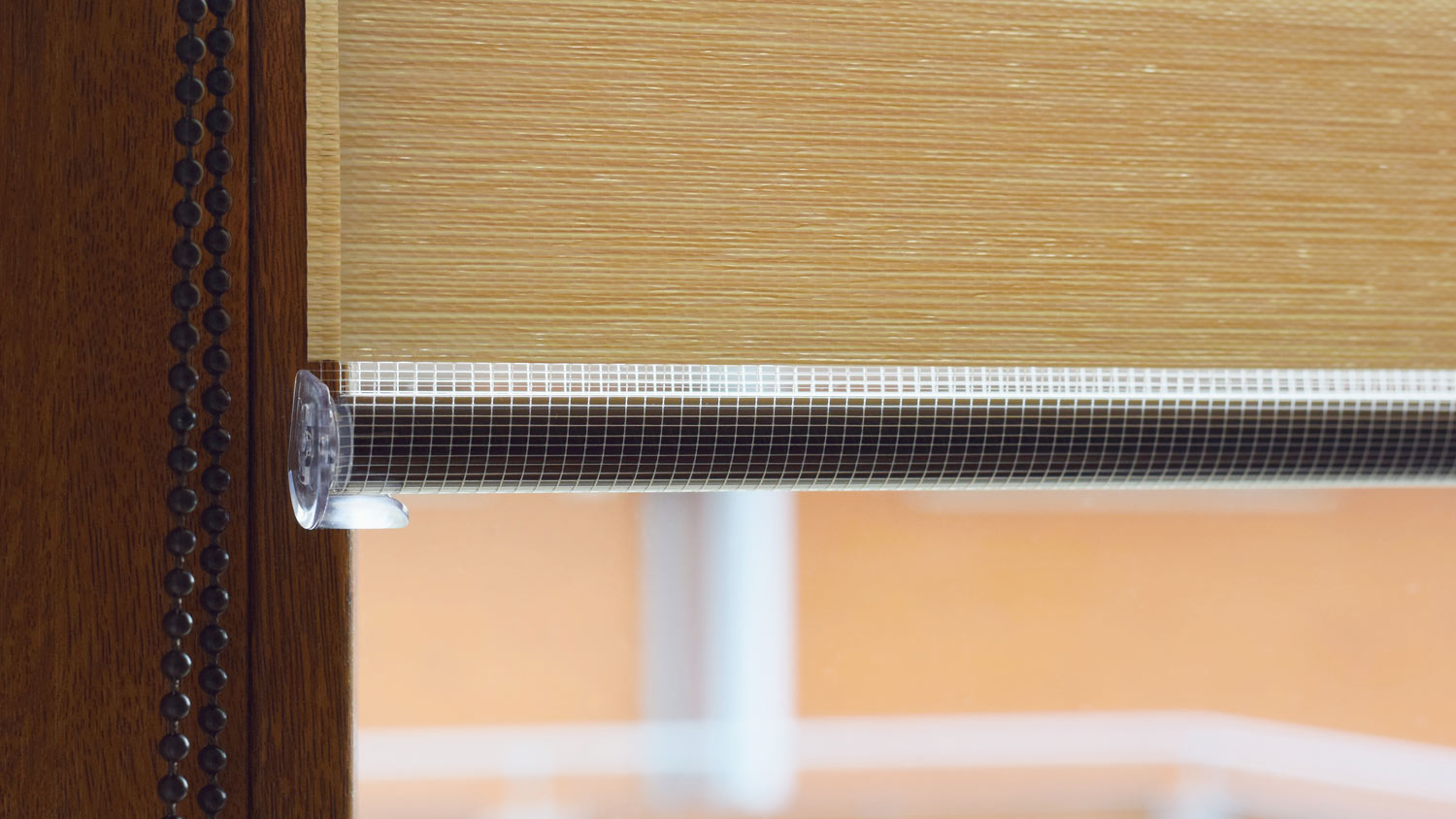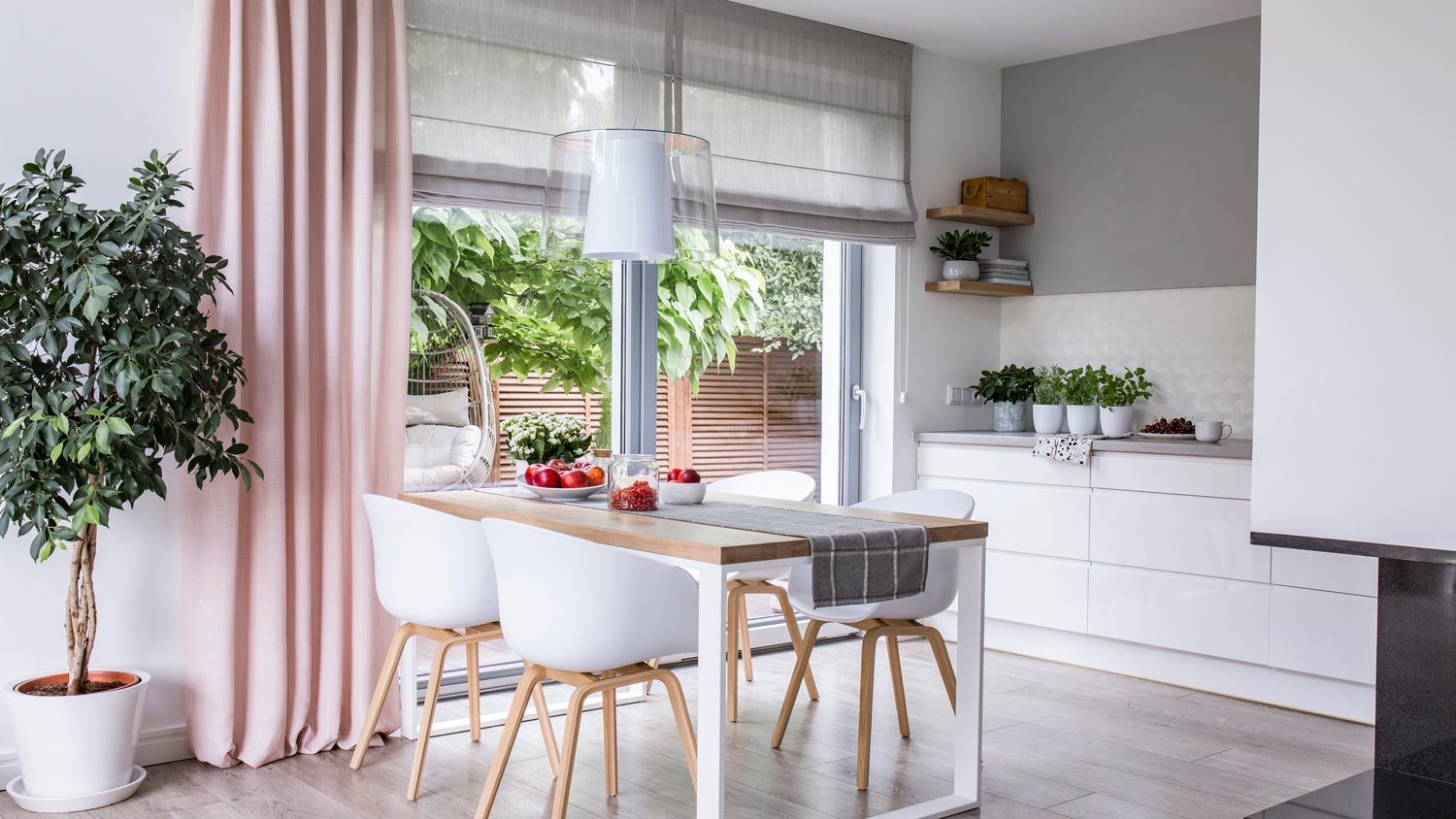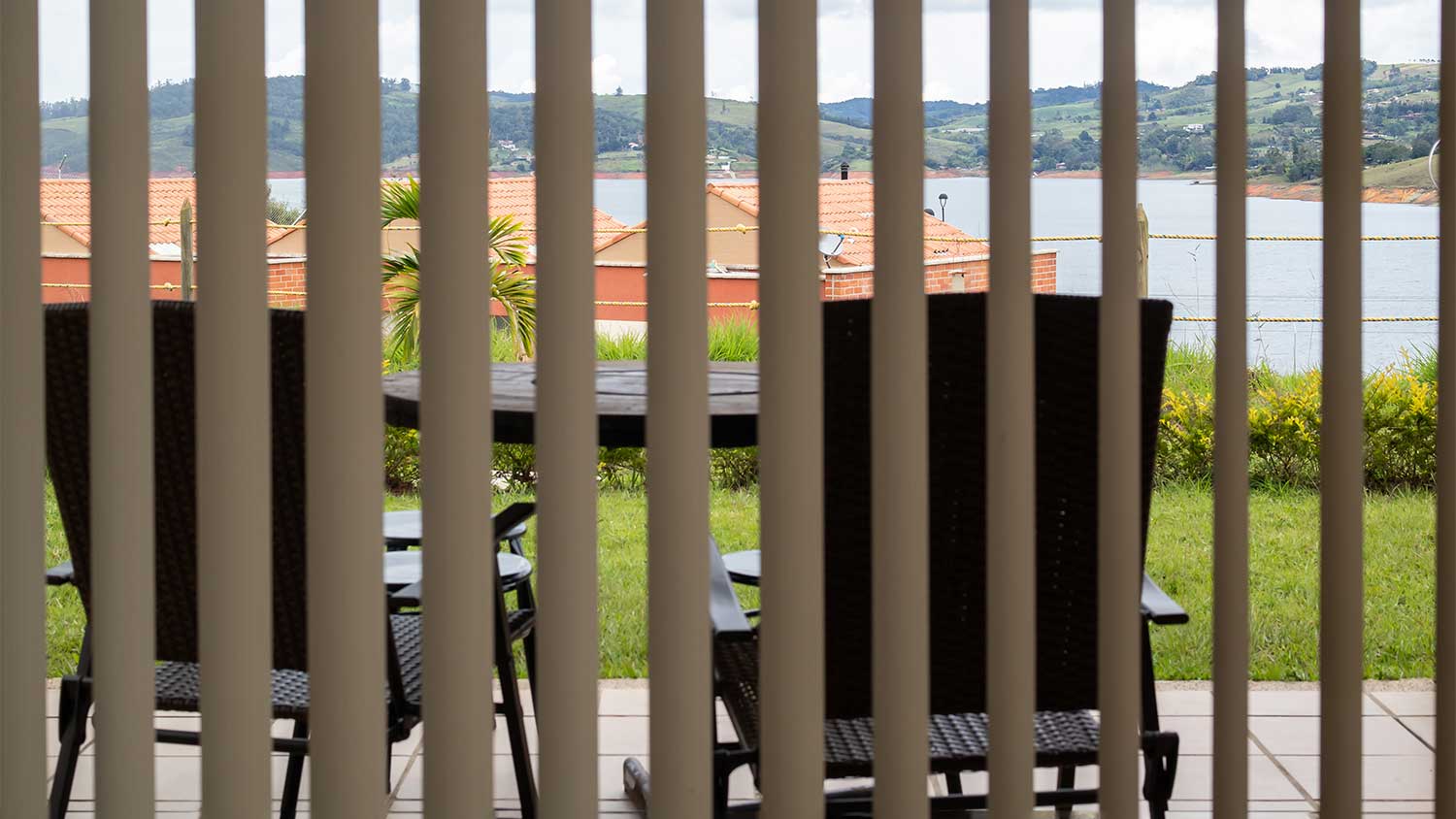6 Window Treatments to Help Block out Light
Some window treatments will leave you in the dark—but that’s a good thing


Not all window treatments block light out equally. It depends on the material and construction. Cellular and roller shades are some of the most popular options, but blinds, shutters, and curtains can also provide total (or near-total) darkness if they’re done right. It all depends on what you’re looking for. Do you want to hide from the sun or let a little bit in? Here are the main options to consider.
How to Pick the Best Window Treatment
Blocking out light means different things to different people. Some homeowners are only looking to filter out UV rays (and lower their air conditioning bill in the process). Did you know that the sun can still damage skin through a window even if you can’t get sunburned? Meanwhile, others are looking for complete darkness while they sleep in the not-so-early hours of the morning. Hey, we’re not here to judge.
Before deciding between shades, blinds, curtains, or any other type of window treatment, you need to think about the light level. Generally, there are three options:
Solar screen: Solar screens let the most light in. These translucent options soften sunlight and block UV rays, but they don’t offer much privacy. You can still see through the fabric. Typically, you’ll find solar screens in the form of solar shades, which you can pair with an additional window treatment like a curtain for more blackout control. Solar shutters exist, but they’re a lot harder to find.
Light filtering: Light filtering window treatments are a middle ground. They still have the dreamy glow of a solar screen, but they offer more privacy. These come in a lot of different varieties like roman shades, roller shades, and cellular shades. Blinds can also filter light when the slats are partially opened.
Blackout: Blackout treatments block out the most amount of light. Some window treatments do better than others because light is prone to leaking from the sides. A custom-fit ensures that the least amount of light will break through.
Not everyone wants to block out all the light all the time. For this reason, many people layer different types of window treatments. It offers more control. For example, you can place a thick curtain over a solar shade to get the best of both worlds—UV protection during the day and darkness when you’re trying to sleep.
Types of Window Treatments
Roller Shades

Roller shades consist of a fabric wrapped around a hollow tube. It’s virtually the same technology used in a roll of toilet paper and toilet paper holder. This, of course, is a little more advanced than what we get in the bathroom. Roller shades are operated by a pulley. Pull one side, and the shade rolls up. Pull the other side, and the shade rolls down.
When it comes to light, roller shades run the gamut. They’re equally as popular when used as blackout shades as they are when used as solar screens. Unfortunately, they can be a bit finicky. Sometimes the shades get stuck, and you have to take them apart to fix them.
Cellular Shades (or Honeycomb Shades)
You might know cellular shades by the name honeycomb shades. Either way, these are similar to roller shades, but instead of rolling around a tube as they’re pulled up, they flatten. This is due to the honeycomb shape of the fabric layers.
The main draw of cellular shades is that they’re highly customizable. You can opt for darker colors and thicker fabrics that let in less light. You can motorize them. You can even get cellular shades that open from the top and bottom, which allows you to let in light while maintaining privacy. When fitted properly, cellular shades can completely block out the sun.
Roman Shades

Roman shades are known for their crisp folds of fabric. This option is as decorative as it is functional, but it’s not the best blackout shade since it’s made from soft fabric. Roman shades in darker, thicker fabrics can block out most light, but some still may escape from the sides.
Style is the main draw. Roman shades come in a myriad of fabrics and finishes. It can completely elevate a room’s decor, making it a popular choice for living rooms, dining rooms, and bedrooms.
Blinds
Blinds get a bad rap as inexpensive window furnishings best left in the ‘80s, but that’s not always the case. They can be versatile, lending themselves to a quaint Tuscan style or edgy industrial look, depending on the material.
The hallmark of blinds is that they’re almost always crafted from a solid material. Usually, it’s wood, aluminum, fabric, vinyl, or some kind of plastic. The slats can be completely closed for maximum privacy, titled open to filter in a bit of light, or pulled all the way up. Because blinds are made of hard, opaque material, they block out a ton of light, but it can leak through the slats.
Shutters
Shutters are similar to blinds, but they’re fitted differently in the window. Blinds are typically attached inside or above a window recess. Shutters are connected to the window frame. That makes them both sturdier and more expensive. Many people find that the cost of a quality set of shutters pays off because you won’t have to replace them for at least a decade—if not decades.
Unfortunately, shutters can also be clunky, even if they do block out a lot of light. Traditional shutters are opened and closed through a rod in the middle that toggles the slats. This means you can’t pull them up completely like blinds or shades. Nonetheless, they’re stunning on tall windows.
Draperies and Curtains

Draperies and curtains are pieces of fabric hung on a curtain rod above or inside a window recess. Like shutters, this is an option with a decorative flair. Draperies and curtains come in all kinds of fabrics and prints and are well suited to tall windows. Some filter out light. Some block it out completely. Curtains can even include a blackout filter or be layered on top of one another for different light levels.
If you’re looking to add an extra something to a drab room, curtains may be the way to go. Just beware that heavy fabrics can make a small room look even smaller.
Best Window Treatments for Blocking Out Light
Best Window Treatments for Total Darkness
Cellular shades are often the best type of blackout shade because they’re made from two layers of taut fabric that can be custom-fitted to your space.
Best Window Treatments for Privacy
Because blinds are fully opaque, they offer some of the best privacy on the market. Cellular shades are also a good option for those who do want to let in light because you can open them from the top.
Best Window Treatments for a Bedroom
Roller shades are both versalite and thin, making them one of the best window treatments for a bedroom. They can be layered with more decorative options, offering privacy while blocking out that morning sun.
Best Window Treatments on a Budget
Blinds are generally the least expensive type of window treatment, costing as little as $650 for a set of mini blinds.
Best Window Treatments for Durability
Shutters far outlive every other type of window treatment. Because they’re made of hard materials, they’re not prone to stains or fading, either.
Best Window Treatments for a Living Room
Roman shades are crafted for form and function, making them the perfect place for a high-traffic area. This stylish option isn’t just something that blocks out a light—it’s an accent piece.
Best Window Treatments for Tall Windows
Though all window treatments will work on tall windows, tall windows specifically help shutters and curtains shine.
Best Window Treatments for a Small Room
Because of their low profile, roller shades and cellular shades are a great option for a tiny room. They block out light, but they won’t overwhelm a space like options made of thicker fabrics and clunkier materials.





- 5 Beautiful Treatments for Tall Windows
- 8 Best Insulating Window Treatments for Energy Efficiency
- 9 Types of Blinds for Windows: How to Choose the Best Window Treatment
- 10 Tips on How to Make Windows More Energy Efficient
- How to Measure for Blinds to Get the Perfect Fit
- 15 Kitchen Window Ideas to Inspire Your Culinary Space
- How to Seal Windows for Winter: A Complete Guide
- 15 Window Design Ideas to Transform Your Home
- How Long Do Windows Last and When Should You Replace Your Windows?
- 6 Tips for Choosing the Right Replacement Windows for Your Home










